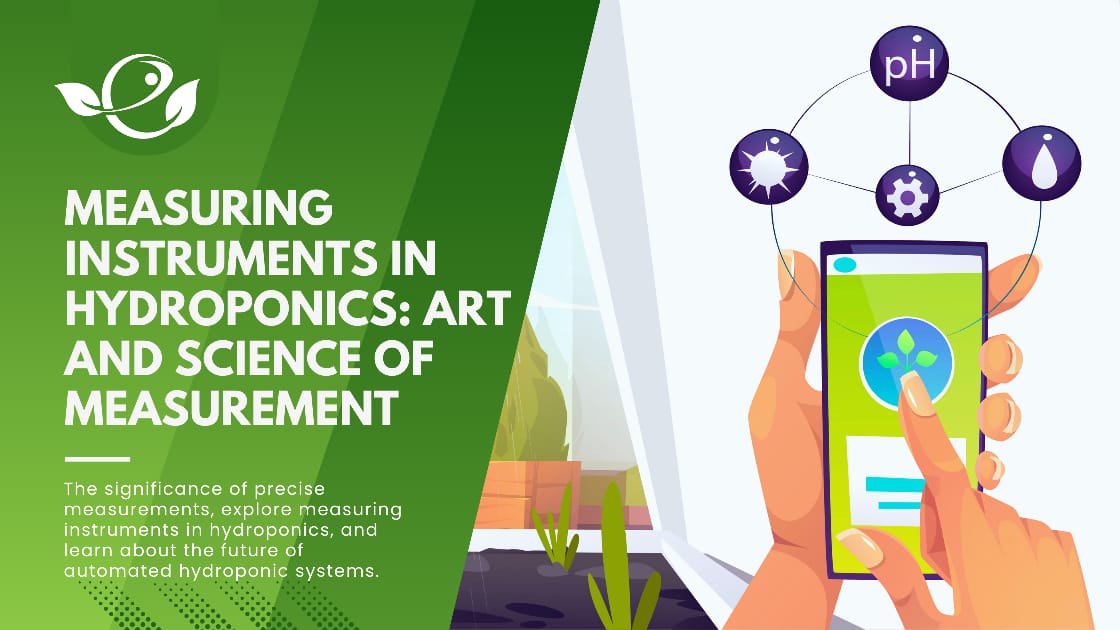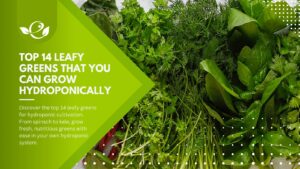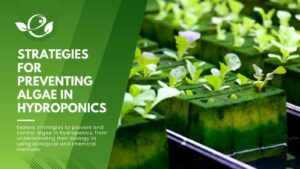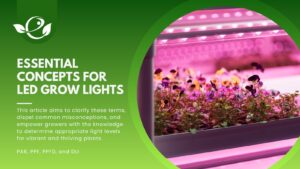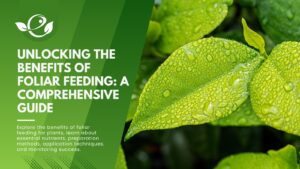Welcome to the world of hydroponics, where you can grow lush, healthy plants without a speck of soil. Originating from the Greek words “hydro” (water) and “ponos” (work), hydroponics is a testament to innovation, efficiency, and environmental sustainability.
But, don’t be fooled by its seemingly simple concept. Successful hydroponics is a precise science, that requires careful monitoring and control of numerous variables. That’s where we come in. This blog post will explore the importance of such measurements, the types of metrics required in hydroponics, Measuring Instruments in Hydroponics, and the future of hydroponics farming in smart and automated systems.
Table of Contents
Understanding the Need for Measurement in Hydroponics
Hydroponic systems, contrary to traditional soil-based farming, control the delivery of water, nutrients, and other necessary growth variables directly to the plants. This control, however, requires constant monitoring and adjustments based on precise measurements. Let’s delve into the different aspects of this need:
Explanation of the Hydroponic System
In hydroponics, plants are grown in an inert growing medium (such as perlite or rockwool) that simply serves as support for the plants while nutrients are delivered directly to their roots through a water-based solution. This direct access to essential nutrients enables the plants to conserve energy that would have been expended in search of nutrients, and instead use this energy for growth.
Role of Precise Measurements in Controlling Variables
In hydroponics, controlling variables with precision can significantly affect the success or failure of the system:
- Nutrient Balance: Since plants receive their nutrients directly through a water solution in hydroponics, the nutrient balance must be accurately maintained to ensure that plants can uptake what they need for growth and development.
- Watering Cycles: Hydroponic systems often use watering cycles to deliver nutrients. Precise measurement and timing of these cycles are crucial to prevent overwatering or underwatering.
- Light and Temperature: As with any type of farming, controlling and measuring light and temperature is necessary in hydroponics. Optimal light and temperature ensure that plants undergo photosynthesis and respiration efficiently.
The Impact of Inaccurate Measurements on Plant Growth
Inaccurate measurements in a hydroponic system can lead to a range of problems, disrupting the careful balance necessary for optimal plant growth:
- Nutrient Burns or Deficiencies: Incorrect measurements of nutrient concentration in the solution can lead to over-fertilization (nutrient burn) or nutrient deficiencies, both of which can affect plant health and yield.
- Stunted Growth or Disease: Incorrect temperature, light, or humidity levels can cause stunted growth, disease, or even death of the plants.
- Waterlogging or Dehydration: Incorrect watering cycle measurements can result in waterlogged or dehydrated roots, both scenarios being detrimental to plant health.
In essence, the importance of accurate measurement in hydroponics is vital—it’s the deciding factor between a thriving system and one that struggles to produce.
Types of Measurements Required in Hydroponics
In order to maintain an optimal environment for plant growth in a hydroponic system, several key parameters need to be measured and controlled.
pH Level
The pH level of your nutrient solution plays a critical role in nutrient availability. Different nutrients are absorbed best at different pH levels. Most plants prefer a slightly acidic pH range between 5.5 and 6.5. However, some plants might prefer a slightly more acidic or alkaline environment.
Electrical Conductivity (EC)
Electrical Conductivity (EC) is a measure of the total amount of nutrients or salts in the water. A solution with a high EC has more dissolved nutrients than a solution with a low EC. Monitoring the EC allows you to manage the nutrient strength to meet the needs of your plants at different stages of their growth.
Temperature
The temperature of the grow room and the nutrient solution can affect many aspects of plant health:
- Grow Room Temperature: Most plants prefer a temperature between 20°C to 30°C. It affects plant metabolism and growth rate, with temperatures too far out of this range potentially causing stress or harm to the plants.
- Nutrient Solution Temperature: The temperature of your nutrient solution influences nutrient uptake and dissolved oxygen levels. Cool water can hold more oxygen but slows down plant metabolism, while warm water holds less oxygen but speeds up plant metabolism.
Light Intensity
Light is essential for photosynthesis, the process through which plants produce energy. Insufficient light can lead to weak, leggy plants, while too much light can cause light burns. Different plants require different light intensities, and the light intensity decreases as the distance from the light source increases.
Relative Humidity
Relative humidity is the amount of moisture in the air relative to the maximum amount the air can hold at the same temperature. It affects the rate at which plants transpire and take up water and nutrients. Most plants thrive in a relative humidity of 40-60%.
Dissolved Oxygen
Dissolved oxygen is the amount of oxygen present in your nutrient solution. It is crucial for root respiration, nutrient uptake, and overall plant health. Low levels of dissolved oxygen can lead to root diseases and a reduction in plant growth.
Water Temperature
Water temperature is critical because it affects the root zone temperature, nutrient uptake, and the amount of dissolved oxygen the water can hold. Most plants prefer a nutrient solution temperature of around 18-20°C. Too high or too low temperatures can stress the plants and affect their growth.
Exploring Hydroponic Measurement Tools
To maintain the delicate balance necessary for optimal plant growth in a hydroponic system, various tools have been developed. Here, we’ll look at some of the most important ones:
pH Meters
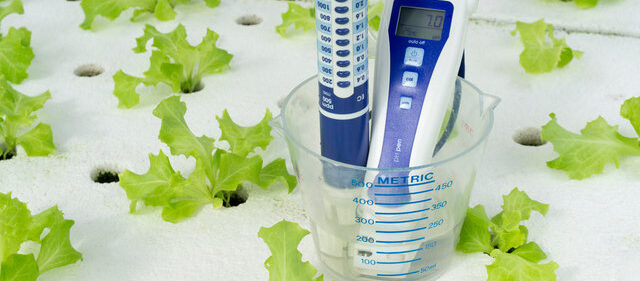
Description and Purpose
pH meters are devices used to measure the acidity or alkalinity of a solution. In hydroponics, a pH meter is crucial to monitor the pH level of the nutrient solution.
Types of pH Meters
There are various types of pH meters available on the market:
- Pen-type Meters: These are portable, handheld devices. They are easy to use, relatively cheap, and suitable for small to medium-sized hydroponic setups.
- Benchtop Meters: These are larger and more accurate than pen-type meters. They are ideal for larger hydroponic operations where precise measurements are critical.
- Digital pH Meters: These provide readings on a digital display, making them easy to read. They are available in both pen-type and benchtop models.
How to Use and Maintain
To use a pH meter, immerse the electrode in the nutrient solution and wait for the reading to stabilize. It’s crucial to clean the electrode after each use to prevent contamination and prolong the device’s lifespan.
Maintenance includes regular calibration (usually using a two-point calibration method with pH 4 and pH 7 buffers), cleaning, and proper storage.
EC/TDS Meters
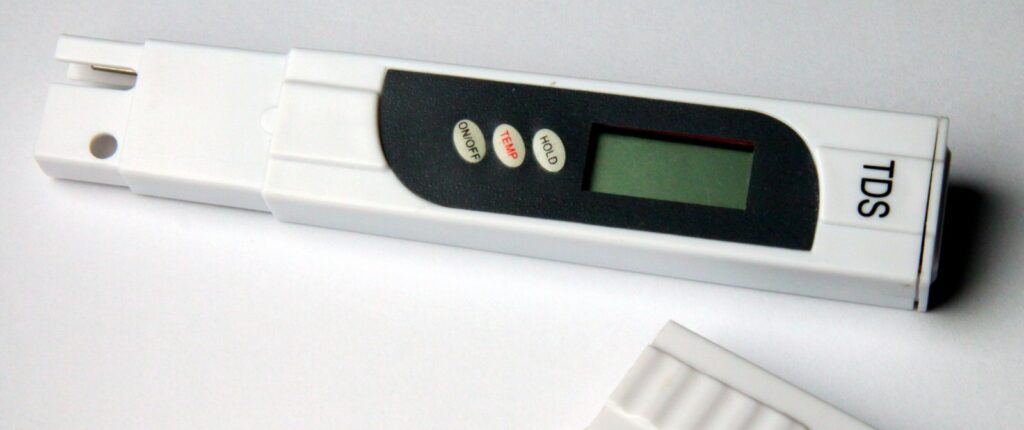
Description and Purpose
EC (Electrical Conductivity) meters measure the amount of total dissolved salts (TDS), or the nutrient concentration, in a solution.
The Difference Between EC and TDS
While both EC and TDS meters measure nutrient concentration, they express it in different ways. EC is a measure of the solution’s capacity to conduct electricity, while TDS is a measure of the total dissolved solids in the solution (generally expressed in parts per million or ppm). Because the two are directly related, EC meters can usually measure both EC and TDS.
How to Use and Maintain
Just like pH meters, EC/TDS meters should be immersed in the solution for reading. The electrode needs to be cleaned after use, and the device requires regular calibration with standard solutions.
Thermometers
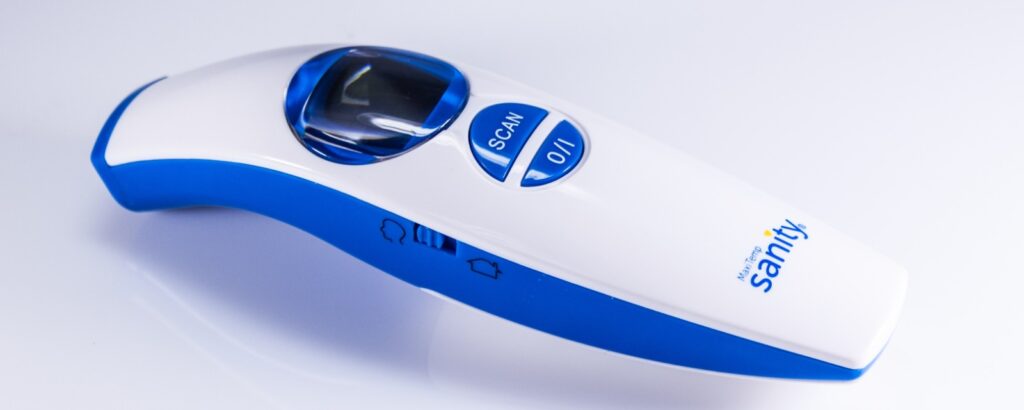
Description and Purpose
Thermometers in a hydroponic setup are used to measure the temperature of the growing environment and the nutrient solution. Proper temperature management aids in optimal plant growth and metabolism.
Different Types Suitable for Hydroponics
- Digital Thermometers: These provide quick and precise readings. Some models come with multiple sensors for monitoring different parts of the hydroponic setup.
- Thermal Imaging Cameras: These devices provide a visual heat map of the growing area. They are more advanced and are typically used in larger operations to detect hot spots or areas of heat stress.
How to Use and Maintain
Thermometers are generally straightforward to use, and maintenance typically involves regular calibration to ensure accurate readings.
Light Meters
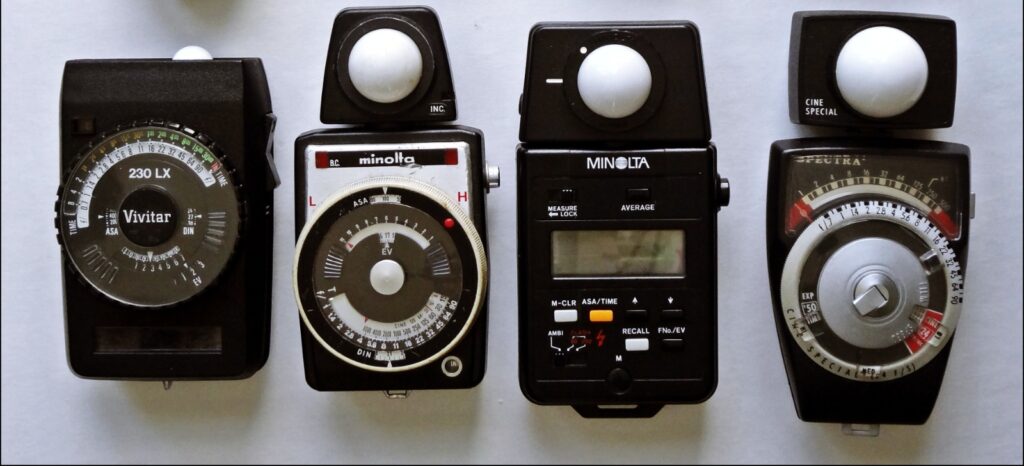
Description and Purpose
Light meters are used to measure the intensity of light that plants receive in a hydroponic setup. The correct light intensity is critical for photosynthesis and healthy plant growth.
Importance of Adequate Light Measurement
Under or over-exposure to light can limit plant growth. Light measurement helps to adjust the light intensity and duration, ensuring plants get the optimal amount of light for their stage of growth.
How to Use and Maintain
Most light meters are handheld and easy to use, simply hold them at the plant level and check the readings. Maintenance usually involves keeping the sensor clean and dry.
Importance of Regular Calibration and Maintenance of Instruments
The Impact of Calibration on Accuracy
Proper calibration ensures the measurements from your tools are accurate. Without regular calibration, the readings can drift over time, leading to potentially harmful inaccuracies.
Frequency of Calibration
The frequency of calibration depends on the tool and the frequency of its use. As a general rule, tools should be calibrated before each use to ensure the most accurate readings.
Steps to Calibrate Common Hydroponic Instruments
Each instrument has its specific calibration procedure, generally outlined in the user manual. Here’s a simplified process for pH and EC meters:
- pH Meter Calibration: Rinse the electrode with distilled water. Immerse it in a pH 7 buffer solution until the reading is stable, then adjust the meter to read pH 7. Repeat the process with a pH 4 buffer solution.
- EC Meter Calibration: Rinse the electrode with distilled water. Immerse it in an EC calibration solution until the reading is stable, then adjust the meter to match the calibration solution’s EC value.
Regular maintenance also involves cleaning the tools after each use, proper storage, and battery replacements when necessary. These practices prolong the lifespan of your tools and ensure their accuracy, leading to a successful hydroponic farming experience.
Where to Buy Hydroponic Measurement Tools
Buying Tips for Hydroponic Measurement Tools
Choose tools that provide the necessary accuracy for your needs. Consider durability, ease of use, and the availability of calibration solutions or accessories.
Recommended Brands and Suppliers
Brands like BlueLab, Hanna Instruments, and Apera offer a wide range of reliable measurement tools. Suppliers can be found online or at local gardening centres.
Approximate Costs
Costs can vary greatly depending on the brand and functionality. Basic meters start at around $20, while advanced digital models can cost several hundred dollars.
The Future of Hydroponic Measurement: Smart and Automated Systems
The future of hydroponics is already here with the rise of smart and automated systems. Technology advancements in the field of hydroponics are reshaping how growers measure and control the various aspects of their hydroponic setups, leading to increased efficiency and higher crop yields.
Overview of Smart Monitoring Systems
Smart monitoring systems integrate technology into hydroponic farming to automate the process of measuring and controlling the crucial factors needed for optimal plant growth.
- Sensors: Smart sensors are placed throughout the hydroponic setup to continuously monitor conditions such as pH, EC, temperature, light, humidity, and dissolved oxygen.
- Data Collection and Analysis: The collected data is sent to a computer or a cloud-based platform where it’s processed and analyzed.
- Real-time Adjustments: Depending on the measurements, the system can automatically adjust various aspects of the environment, such as the nutrient solution’s pH or EC, or the growing area’s temperature and humidity.
- Remote Monitoring: Most smart systems allow growers to monitor and control their hydroponic systems remotely through an app on their smartphone or tablet.
Benefits of Automation in Measurement
Automation in hydroponic measurement has several significant benefits:
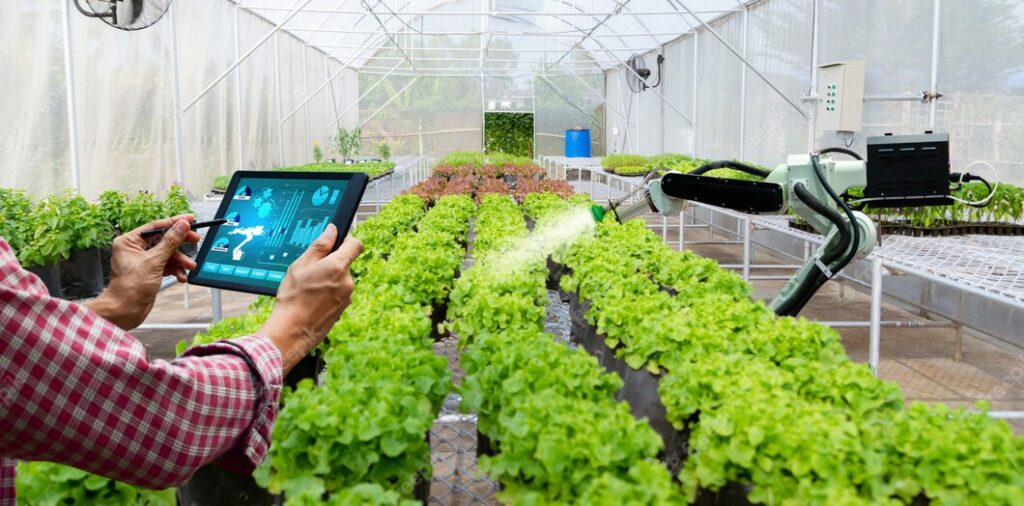
- Increased Accuracy: Smart systems can make highly accurate measurements, far beyond what the human eye can discern.
- Efficiency: Automated systems save time by eliminating the need for manual measurements. They can make adjustments in real time, preventing any damage from incorrect levels.
- Data Tracking: These systems can track and store data over time, allowing growers to analyze and optimize their methods.
- Remote Control: Growers can control their hydroponic system from anywhere, allowing for flexibility and constant monitoring.
Examples of Current Technologies and their Applications
A range of smart technologies is available today, catering to different sizes and types of hydroponic systems:
- Automated pH Controllers: These systems continuously monitor the pH level of the nutrient solution and automatically add pH up or down to maintain the ideal range.
- Nutrient Dosers: These devices measure the EC of the nutrient solution and automatically add nutrients as necessary to maintain the desired nutrient strength.
- Climate Controllers: These systems can control a range of environmental factors like temperature, humidity, and light intensity.
- Smart Irrigation Systems: These systems monitor the moisture levels in the growing medium and automatically irrigate the plants when needed.
- Aquaponics Controllers: In aquaponic systems, controllers maintain the balance between the fish tank and the plant grow beds, automating pH, temperature, and water levels.
Smart and automated systems are an exciting advancement in hydroponic farming, making it easier than ever to achieve optimal growth conditions. As technology continues to evolve, we can expect these systems to become even more sophisticated and accessible to growers of all sizes.
Conclusion
The precise measurement and control of various parameters are crucial to successful hydroponic farming. While this can be complex, the rewards of healthy, high-yielding plants make the effort worthwhile. As technology continues to advance, automation will become more prevalent, making precision hydroponics even more accessible to all. Keep learning, keep growing, and embrace the future of farming.
Frequently Asked Questions
1. What other instruments are helpful in a hydroponic setup apart from the ones discussed above?
Apart from the discussed instruments, other tools that can be useful include nutrient dosers for precise nutrient addition, carbon dioxide (CO2) meters for maintaining optimal CO2 levels for plant growth, and water hardness testers to prevent a nutrient lockout.
2. Is there a multipurpose device that can measure pH, EC, and temperature?
Yes, there are multipurpose meters that can measure multiple parameters such as pH, EC, and temperature. They are costlier than individual meters but offer convenience and space-saving benefits.
3. How long do these measuring instruments typically last?
The lifespan of a measuring instrument depends on its quality, usage, and maintenance. Regular cleaning, proper storage, and calibration can significantly increase a device’s lifespan.
4. Can I use regular home tools like a home thermometer or humidity meter for my hydroponic setup?
While it is technically possible, tools designed specifically for hydroponics tend to offer greater precision and reliability. This can make a significant difference to the health and yield of your plants.
5. Are there any apps that can help me track my measurements?
There are several apps available that help track and log the measurements for your hydroponic system. Apps like GrowBuddy, Botana, and Happy Plant can help you keep track of various parameters over time.
6. How can I measure the nutrient level in my hydroponic system?
You can measure nutrient levels by using an EC (Electrical Conductivity) meter. The EC reading gives you an idea of the total nutrient concentration in your water. Keep in mind that it won’t tell you the exact nutrient composition. For a more in-depth nutrient analysis, laboratory testing may be required.
7. Is it necessary to measure light intensity for indoor hydroponic systems?
Yes, measuring light intensity is crucial even for indoor systems. Different plants have different light requirements, and knowing the light intensity can help you optimize your artificial lighting setup for maximum plant growth.
